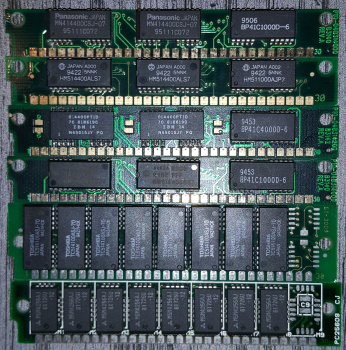First post, by rocksolid_1997
Im looking into a small side-project making a few 30 pin simms. IM not an electrical engineer, but its a simple board, with very little that can go wrong.
I have been looking through the 30 pin SIMM specs, and I noticed the three parity lines. I then got out all my 30 pin simms, and I couldn't find a single one that didn't have the parity chip added. Wikipedia mentions SIMM 30 pins without the parity (26, 28, 29) doesn't have the pins connected (im guessing grounded, not floating?).
For this project, I would love to be able to completely loose the parity, but im not sure if its needed. Does anyone have any information about whether or not the parity chip is needed by some systems ? Was it needed on most systems or actually none ?
pfa my 30pin simm collection 😀

